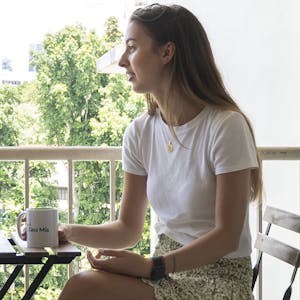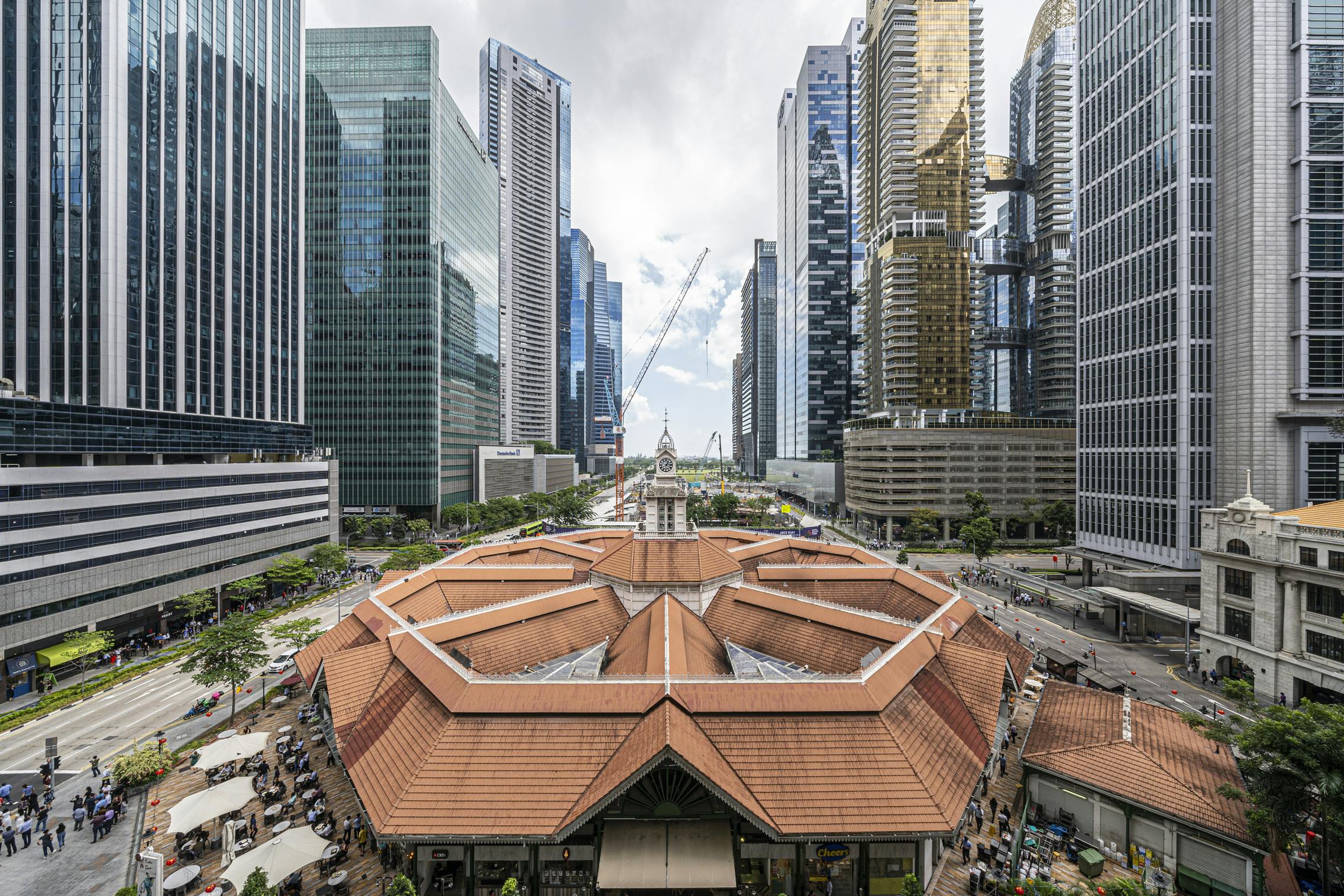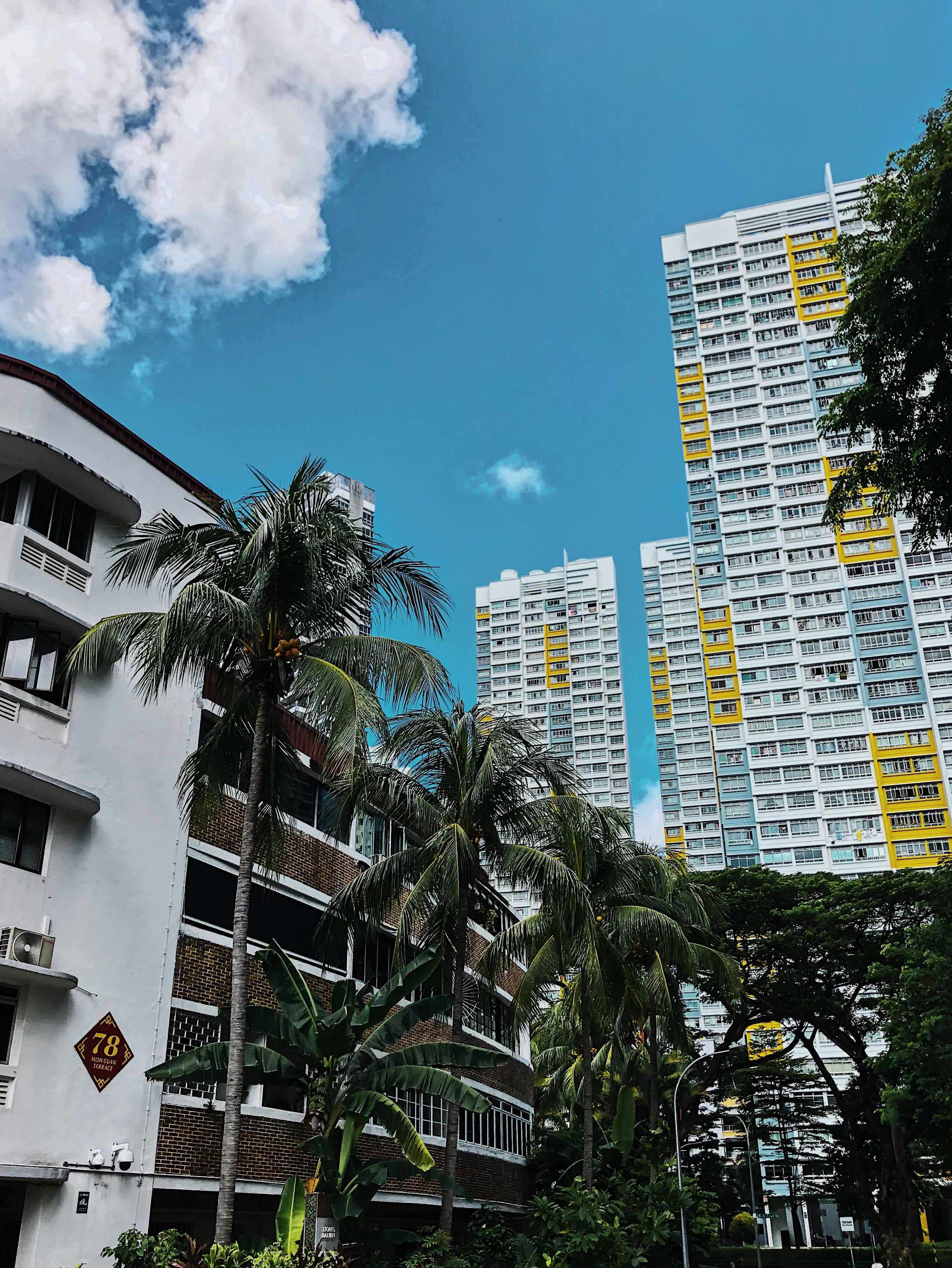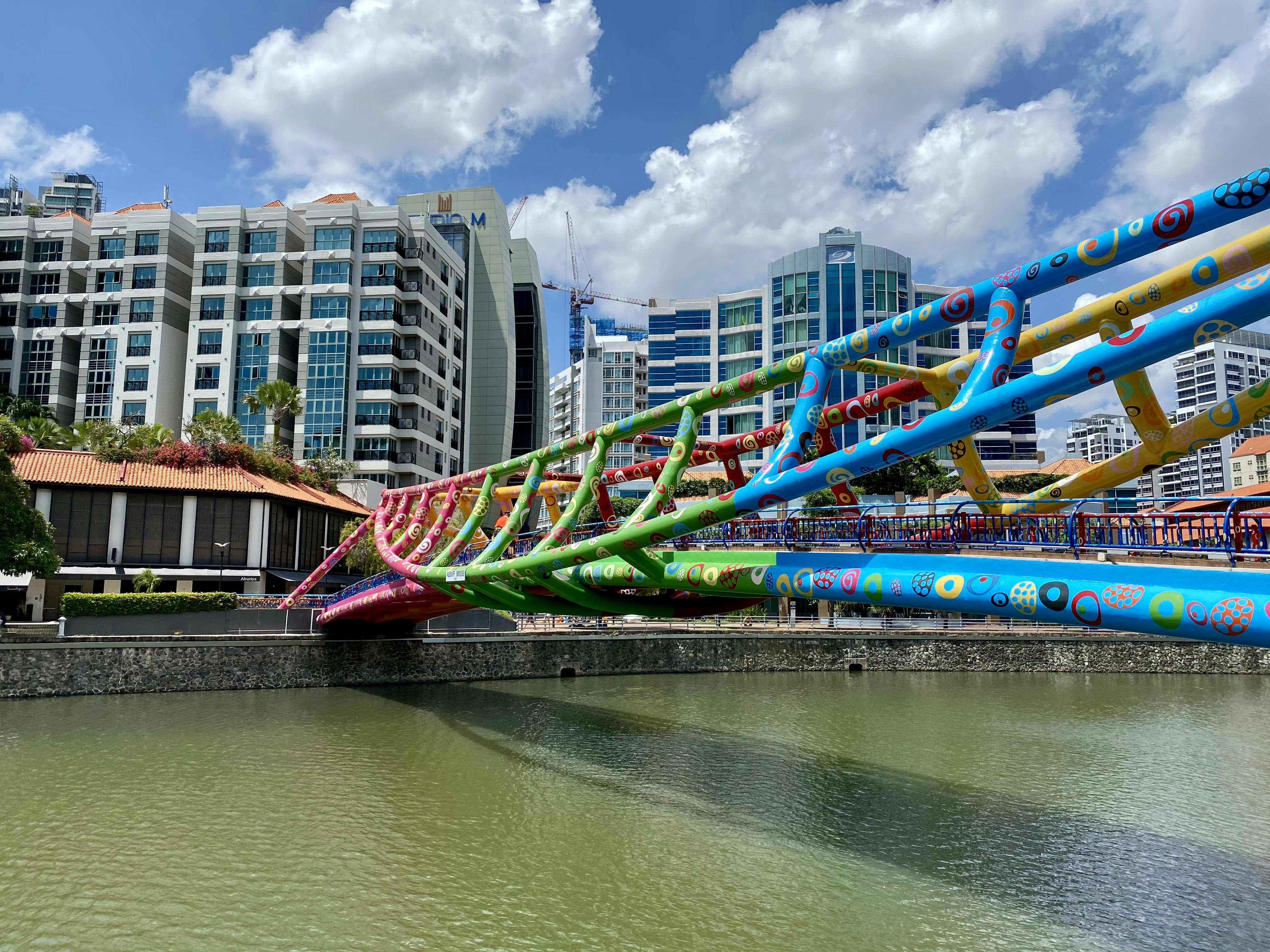Moving in: the Singapore Expat Guide

19 Apr 2024
Welcome to Casa Mia Coliving’s expat guide for all things related to moving to Singapore! Whether you are an experienced professional or a fresh grad, Singapore has remained one of the best destinations for expats to relocate to. Its strong economic situation, paired with the high quality of life it offers, are just two of the many reasons why Singapore continues to be a leader. However great a country may be, the most important thing when relocating is accommodation. When choosing where in Singapore to live, you should keep two things in mind: how much you are willing to spend on rent and whether you want to live near the city centre. These two insights will be key when it comes to deciding on your new home.

Below you will find more information on topics related to accommodation, location, and costs.
How do I find a home in Singapore?
The best way to find accommodation in Singapore is through online property platforms. A quick browse of these websites will quickly help you gauge prices and sizes of the apartments Singapore has to offer. There are many websites you can use; here are a few suggestions:
Property Guru
Most likely the first website you will come across when searching for accommodation is Property Guru. Property Guru has a comprehensive range of properties, with the option to directly contact expat/relocation agents.
99co
Like Property Guru, 99co has a large variety of accommodations, ranging from Condos to HDBs to landed homes. The website has an organised layout creating a neat overview making browsing here very easy and convenient.
STProperty
STProperty provides a great overview of the properties they have to offer. An added benefit they include is providing insights into the area of the respective apartment. Such as relevant bus stops, shopping malls or supermarkets. Additionally they offer virtual viewings.
Nestpick
Unlike the above, Nestpick boasts a wide range of short-term rentals. Partnered with third-parties, including Roomster and Booking.com, Nestpicks’ 10,000+ listings include both entire apartments and single rooms.
PropSeller
The relatively new platform PropSeller offers a modern real-estate experience which not only provides quality virtual tours, but also pairs you with the best suited agents to help find your new home. Just select your location, ideal price and PropSeller will put you into contact with one of their best agents.
Coliving
If you would rather rent just a room, there are many coliving companies that you can check out! As coliving is all about convenience, you'll just need to know your preferred location and budget and the companies will make it easy for you to find your new home. There are even some operators that have partnered with Rently to help eliminate any deposit stress! Find out more about Rently and the deposit-free renting experience, here!
Want to know more about what coliving is and which companies there are in Singapore? Click here to find out more!
Casa Mia’s Tip: To focus and narrow down your search on apartments that will tick your list of requirements, filter your search inquiries by rental price, location and number of rooms! You can find a filter for all of our rooms and it will make your search just that much better!
Where should I live in Singapore?
As mentioned before, you should create a checklist of most important factors such as apartment size, rental price or proximity to public transport. These factors will have a large influence on where you decide to settle. If you are still uncertain about where to live in Singapore, have a read of some of the most popular expat areas, below.
Central Business District

Dubbed the CBD, living here comes with a number of benefits. Located in the heart of the city centre, spanning from Raffles Place to Tanjong Pagar, convenience is right at your feet. Whether it is travelling to work (assuming your office is located here), shopping in Orchard or wanting a quick beach getaway at Sentosa, you will never be in a taxi or MRT for more than 10-15 minutes. The centrality of this location however does come with a downside, higher rental prices!
- Downside: Rental prices tend to have a higher price tag due to the central location
- Casa Mia’s favourites: Lau Pa Sat, Da Paolo Gastronomia Raffles Place, No Menu, Common Man Stan, Kinki (see here for more: Our favorite places in the Singapore's CBD)
Tanjong Pagar
Just edging on the outskirts of the CBD, Tanjong Pagar is also a central area in Singapore. Juxtaposing the enormous skyscrapers, this area also has quaint little streets. Tucked away in Ann Siang- or Duxton Hill you’ll find beautiful historic shophouses, surrounded by small but chic independent eateries and bars, creating a vibrant yet relaxed atmosphere at night. Try quality local food and head to Maxwell Hawker Centre for the Tian Tian Hainanese Chicken Rice (Michelin star!)
- Downside: Rental prices tend to have a higher price tag due to the central location
- Casa Mia’s favourites: D.O.C., Jigger & Pony, Bar Milano, Blue Label Pizza & Wine, Bar Cicheti, Potato Head (see here for more: Our favorite places in Tanjong Pagar)
Tiong Bahru

Tiong Bahru is an up-and-coming district, oozing retro old-school charm. Located not far from Chinatown, roughly 15 minutes by MRT, Tiong Bahru has a far more quiet and peaceful vibe. Fewer skyscrapers and more authentic heritage houses, famous bookstores, and trendy record shops. This gives Tiong Bahru a Singaporean Notting Hill feel, perfect for anyone who is looking for a cool, crafty, and expressive neighbourhood.
- Downside: No condos, must like the (awesome) walk-up apartments and be ok not to have a swimming pool and a gym in the building
- Casa Mia’s favourites: Tiong Bahru Bakery, Merci Marcel, Tiong Bahru Food Centre (see here for more: Our favorite places in Tiong Bahru)
River Valley

Stretching from Robertson Quay to Alexandra Road, River Valley offers a plethora of condominiums as well as eccentric bars, restaurants and shopping malls. Here you are close to Clarke Quay, thriving with popular nightlife spots located right along the Singapore River. For those who enjoy greenery and live outdoors events Fort Canning Park is close by and if in need of retail therapy Orchard Road is just a stop or two away. All in all, a win-win situation!
- Downside: This is a popular location amongst the expats so you can expect higher rental tags here!
- Casa Mia’s favourites: Common Man Coffee, DOP Mozzarella Bar, Publico (see here for more: Our favorite places in Robertson Quay and River Valley)
Orchard
Arguably, Orchard offers all in one. Located in the heart of Singapore's retail hub, Orchard offers amazing retail therapy on one hand but also boasts a wide range of restaurants and entertainment outlets. The two MRT stops, Orchard and Somerset make traveling extremely convenient and although Orchard Road is one of Singapore’s busiest areas, there are also plenty of quiet and calm neighbourhoods around.
- Downside: It can get quite busy here so be ready to be stuck in a bit of traffic whether in Grab (equivalent to Uber) or bus. Also the only area in Singapore where access to parks is more than just a short walk away
- Casa Mia’s favourites: Wild Honey, P.S Cafe, Uma Uma (and its speakeasy, The Horse’s Mouth), Poke Theory, Buona Terra (for celebrating a special occasion)
Newton & Novena
Tucked 10 minutes away from Orchard, Newton and Novena both offer a more relaxed environment with a suburban feel. MacRitchie reservoir, a popular hiking route amongst people and monkeys is nearby as well as the famous Newton Food Centre you may have seen in ‘Crazy Rich Asians’.
- Downside: Does not offer as many cool hangouts or coffee shops with shops mainly concentrated in malls
- Casa Mia’s favourites: Newton Food Centre, Two Men Bagel House, Cavemen, DaLuca, Kazoku. Check out more of our favorites in this dedicated blog post: “Our Favorite Places in Newton-Novena.”
Katong
Once an old fishing village, Katong is now a beautiful area in the east, home to a number of colourful heritage shophouses and colonial bungalows. Dubbed the ‘Peranakan Paradise’, Katong offers a number of quality dine out options and is known for the famous Chinese noodle soup, Katong Laksa. There are also a number of trendy and hip boutiques and cafés as well as big malls. A short walk away you can find the East Coast Park, a great combination of palm tree greens and ocean blues, ideal for a weekend walk.
- Downside: Depending on your place of work, living in Katong could come with longer commuting.
- Casa Mia’s favorites: Al Forno, Etna, Baba Chews, Beer Basket, Brawn & Brains. Check out more of our favorites in this dedicated blog post: “Our Favorite Places in Katong.”
Queenstown
The western district of Queenstown may not be as popular as it is a bit further from central Singapore, yet offers the perfect location for those in tech or students at INSEAD or NUS. Not only does it have a massive IKEA but it also has many hidden gems such as the panoramic views at SkyVille@Dawson, rooftop drinks at Aqua Luna or the colonial Gillman Barracks, a must-see for art lovers. For those who are into hiking, check out the Rail Corridor, Singapore's first railway built in 1903, now a popular hiking route with a historic twist.
- Downside: A little further away from popular expat areas
- Casa Mia’s favourites: Pietrasanta, Cafe Melba at Mediapolis, 328 Katong Laksa at Queensway Shopping Centre, The Cheese Ark
How much does it cost to live in Singapore?
It is a well-known fact that the cost of living in Singapore can be high. Having come to Singapore from Germany, there are a number of striking differences that I noticed even before landing. Rental prices were the biggest difference. Whilst a central apartment in Berlin may cost around 950€/month the same in Singapore would cost around 1,700€/month. However, you will quickly spot that there are more expensive areas to live in, mostly the central ones whilst the outskirts come with a lower price tag.
On the other hand, grocery shopping can be a lot cheaper than in Europe. Fresh fruit and veggies can easily be bought from local stalls which offer great deals. My local fruit stall sells 3 mangos for $3, which are a lot tastier than in Europe fyi. Wet markets such as the Tiong Bahru Market are also extremely convenient, offering quality seasonal meats and seafood for exceptionally low prices.
Depending on your tendencies you can spend $500 a meal or $5. Recently added to UNESCOs list of intangible cultural heritage, Singaporean Hawker Centres can make eating out cheap, you can get chicken rice and kopi (local coffee) for a grand total of $6. If your tastebuds are craving something a little more high end and fancy, there are plenty of fine dining restaurants too.
Club nights can be a bit more expensive so be prepared to spend a little more than you might be used to. A club cover charge of $20+ is pretty standard and drinks will usually start at a similar price. But don't worry, if you are living on a student budget there are plenty of bars where free flows and happy hours are affordable. Just make sure to not break any laws whilst you're at it (such as a $1,000 fine for drinking liquor outside of bars from 7am till 10:30pm)!
If you are still unsure, find some informative sample prices here!
Learn more
Are you looking for more info about living in Singapore? Check out our post The Ultimate Guide on Where To Live in Singapore - for Young Professional Expats (2022 edition).
Frequently Asked Questions (FAQs)
- What are the best online property platforms to find accommodation in Singapore? The best online property platforms in Singapore include CasaMia Coliving, Property Guru, 99co, STProperty, Nestpick, and PropSeller. These websites offer a wide range of options, from condos and HDBs to short-term rentals and coliving spaces, making it easy to find a home that suits your needs.
- How does Property Guru help in finding accommodation in Singapore? Property Guru is a comprehensive property platform that offers a vast range of properties. It allows you to directly contact expat/relocation agents, providing a streamlined process to find your ideal accommodation in Singapore.
- What kind of accommodations can I find on 99co? 99co features a large variety of accommodations, including condos, HDBs, and landed homes. Its organized layout and user-friendly interface make browsing and finding suitable properties easy and convenient.
- What additional benefits does STProperty offer? STProperty provides insights into the area around the respective apartment, such as nearby bus stops, shopping malls, and supermarkets. They also offer virtual viewings, enhancing the convenience of searching for a home online.
- What type of rentals does Nestpick specialize in? Nestpick specializes in short-term rentals, boasting over 10,000 listings that include both entire apartments and single rooms. They partner with third-party platforms like Roomster and Booking.com to offer a diverse range of options.
- What is unique about PropSeller's approach to finding a home in Singapore? PropSeller offers a modern real-estate experience with quality virtual tours and personalized agent pairing. By selecting your location and ideal price, PropSeller connects you with the best-suited agents to help you find your new home.
- How does coliving work in Singapore? Coliving involves renting a room in a shared living space, focusing on convenience and community. Many coliving companies in Singapore offer flexible leases, fully furnished rooms, and amenities. Some even partner with Rently to provide a deposit-free renting experience.
- What should I consider when deciding where to live in Singapore? When choosing where to live, consider factors such as apartment size, rental price, and proximity to public transport. Popular expat areas include the Central Business District, Tanjong Pagar, Tiong Bahru, River Valley, Orchard, Newton & Novena, Katong, and Queenstown.
- How does the cost of living in Singapore compare to other cities? The cost of living in Singapore can be high, especially in central areas. Rental prices are significantly higher compared to cities like Berlin. However, groceries can be cheaper, and affordable dining options like hawker centres make living in Singapore manageable.
- What are some affordable dining options in Singapore? Singapore offers a range of affordable dining options, including hawker centres where meals like chicken rice and kopi can cost as little as $6. For those looking for a more upscale experience, there are plenty of fine dining restaurants as well.


